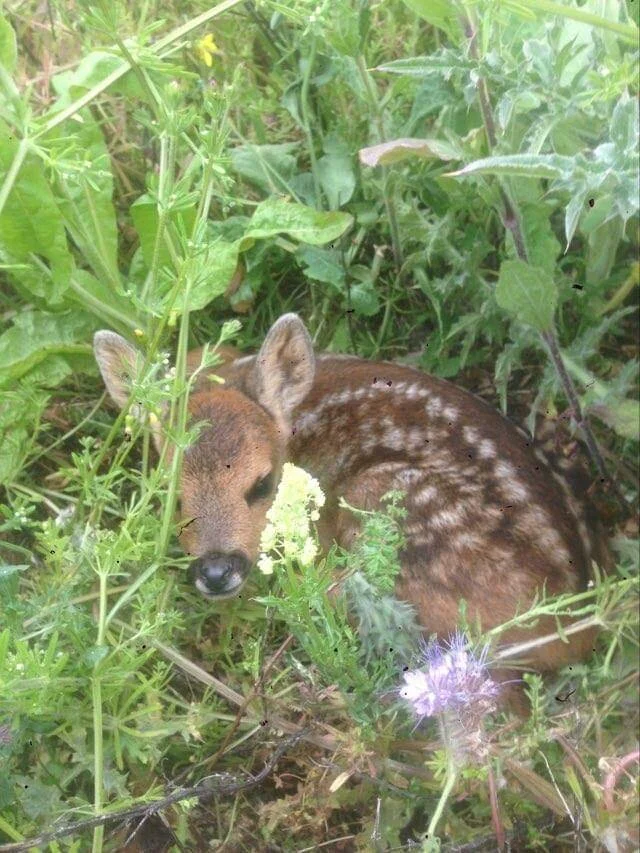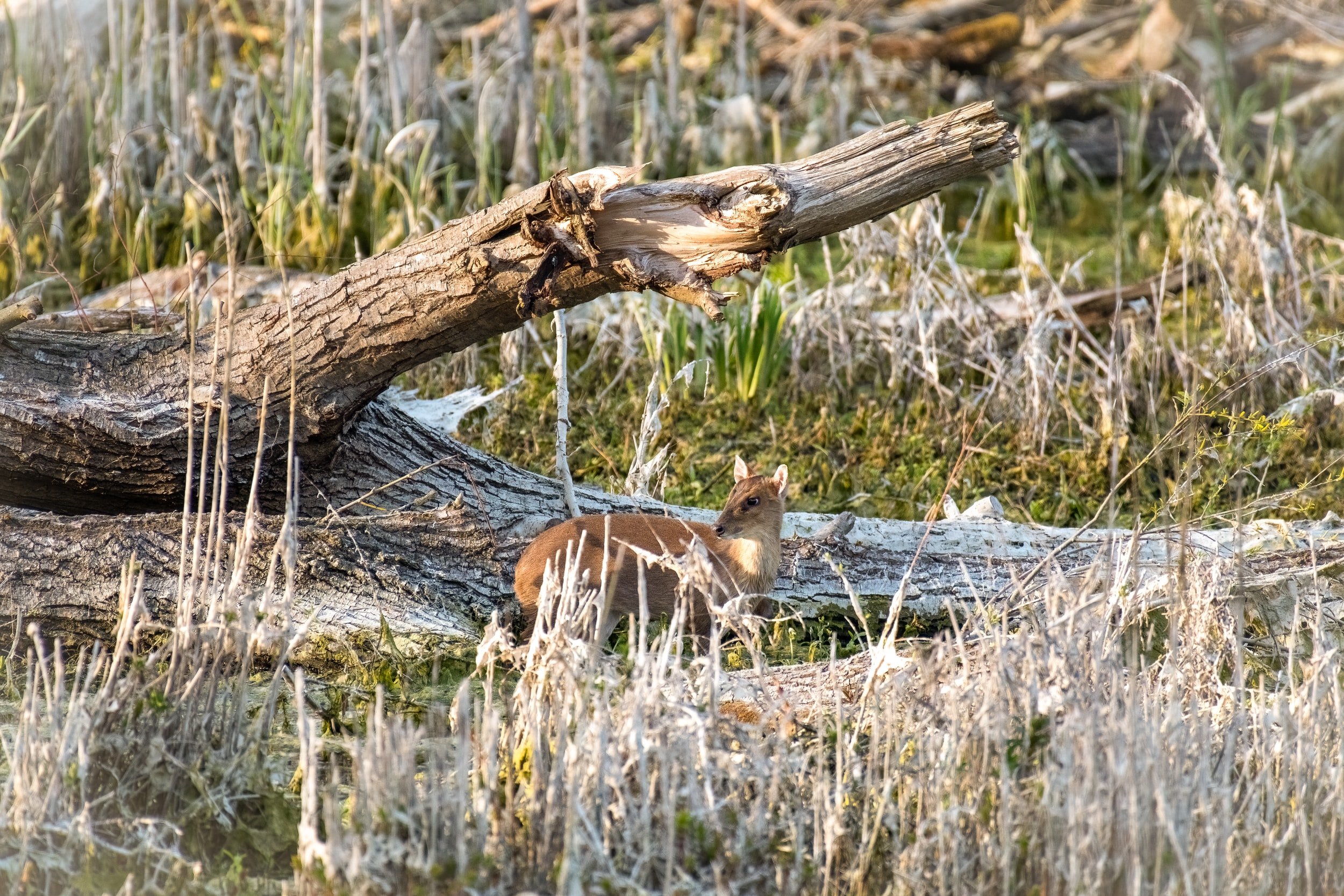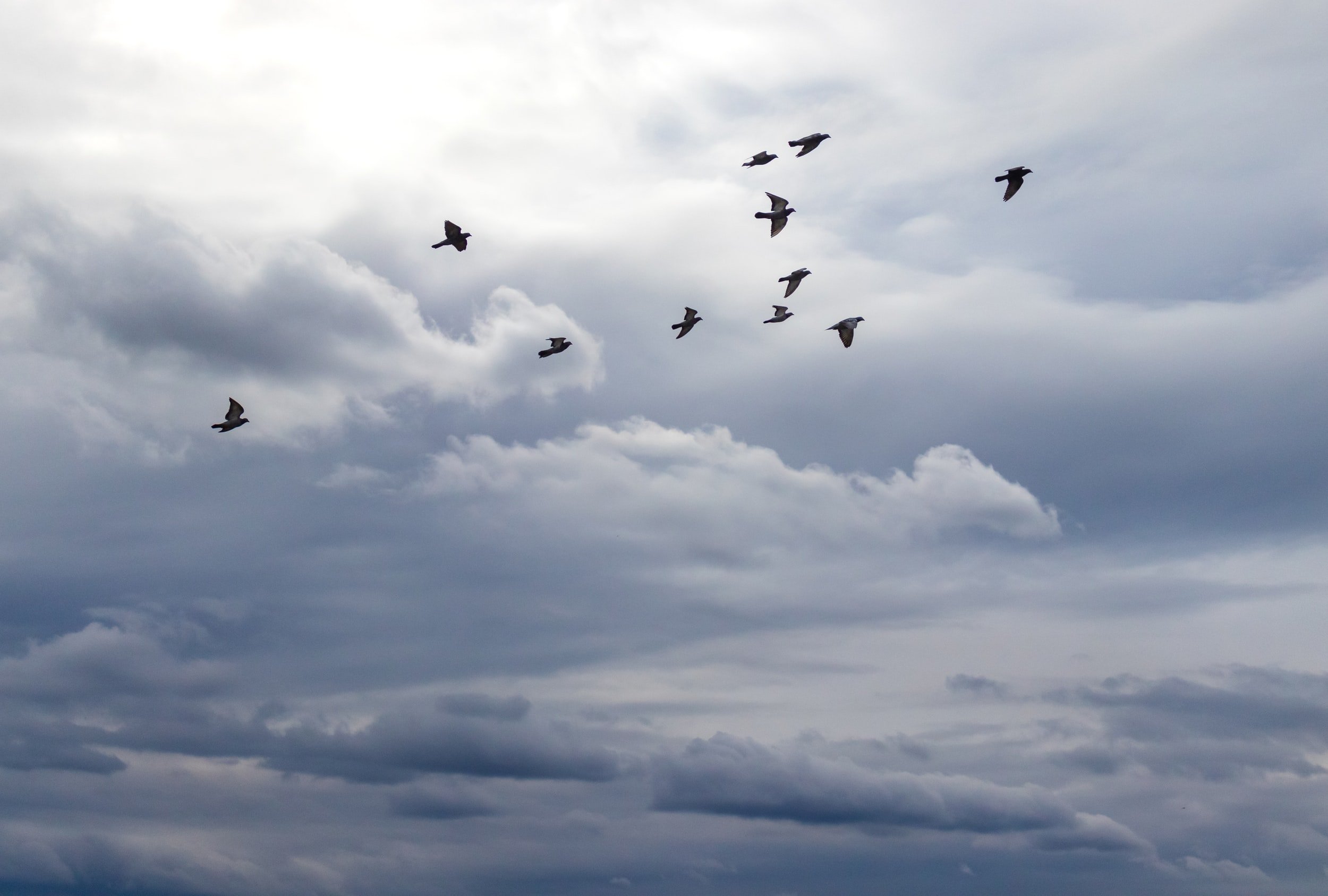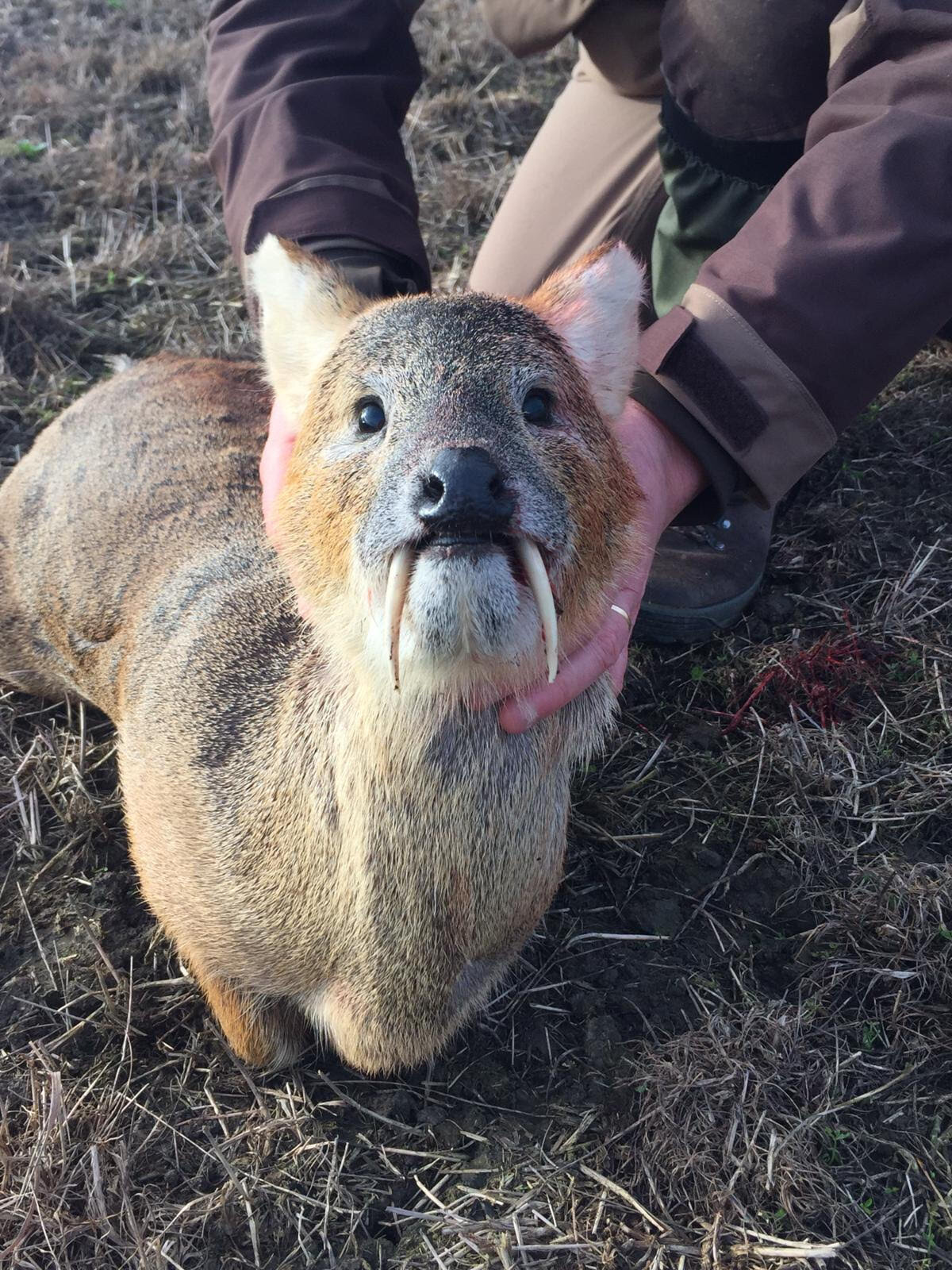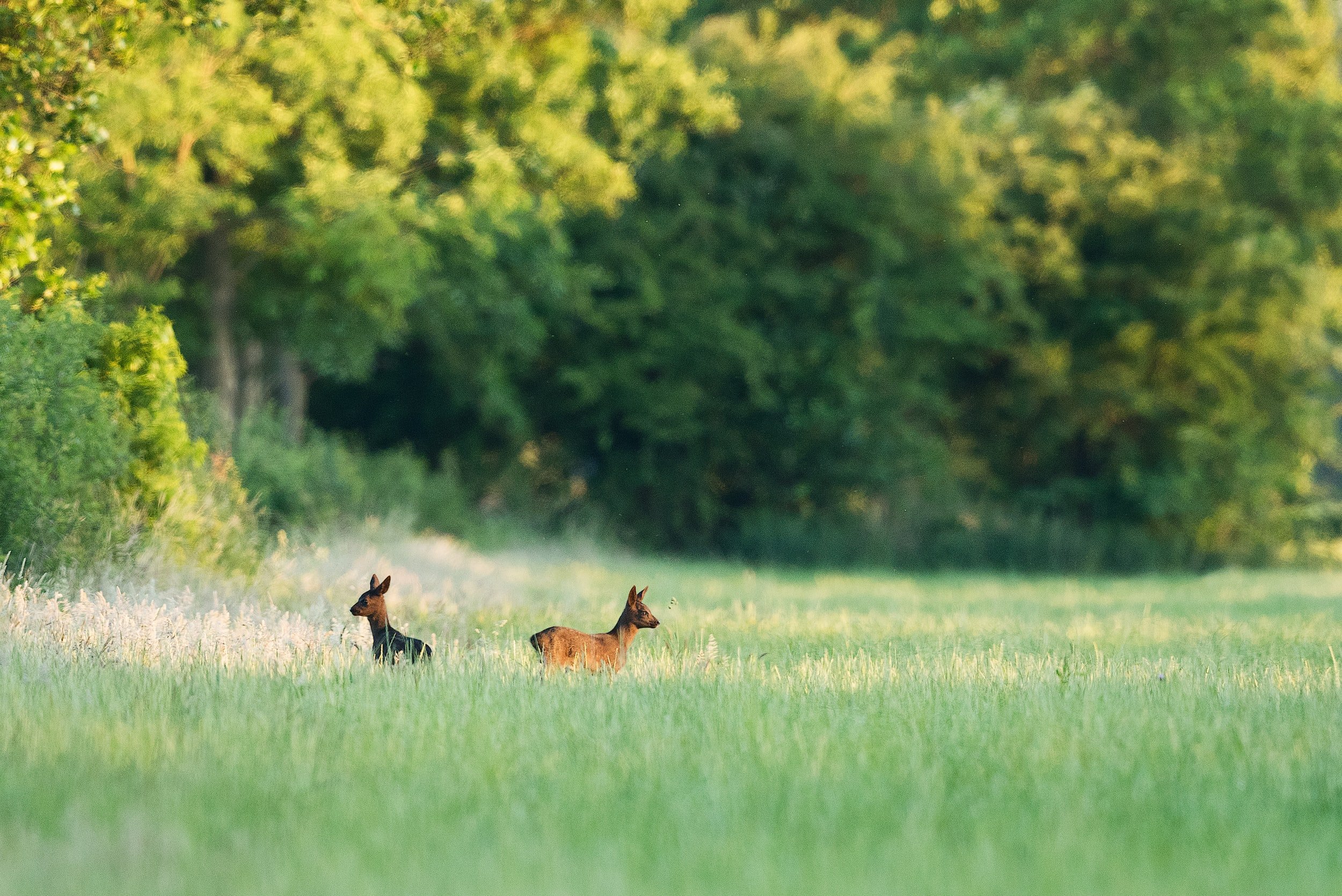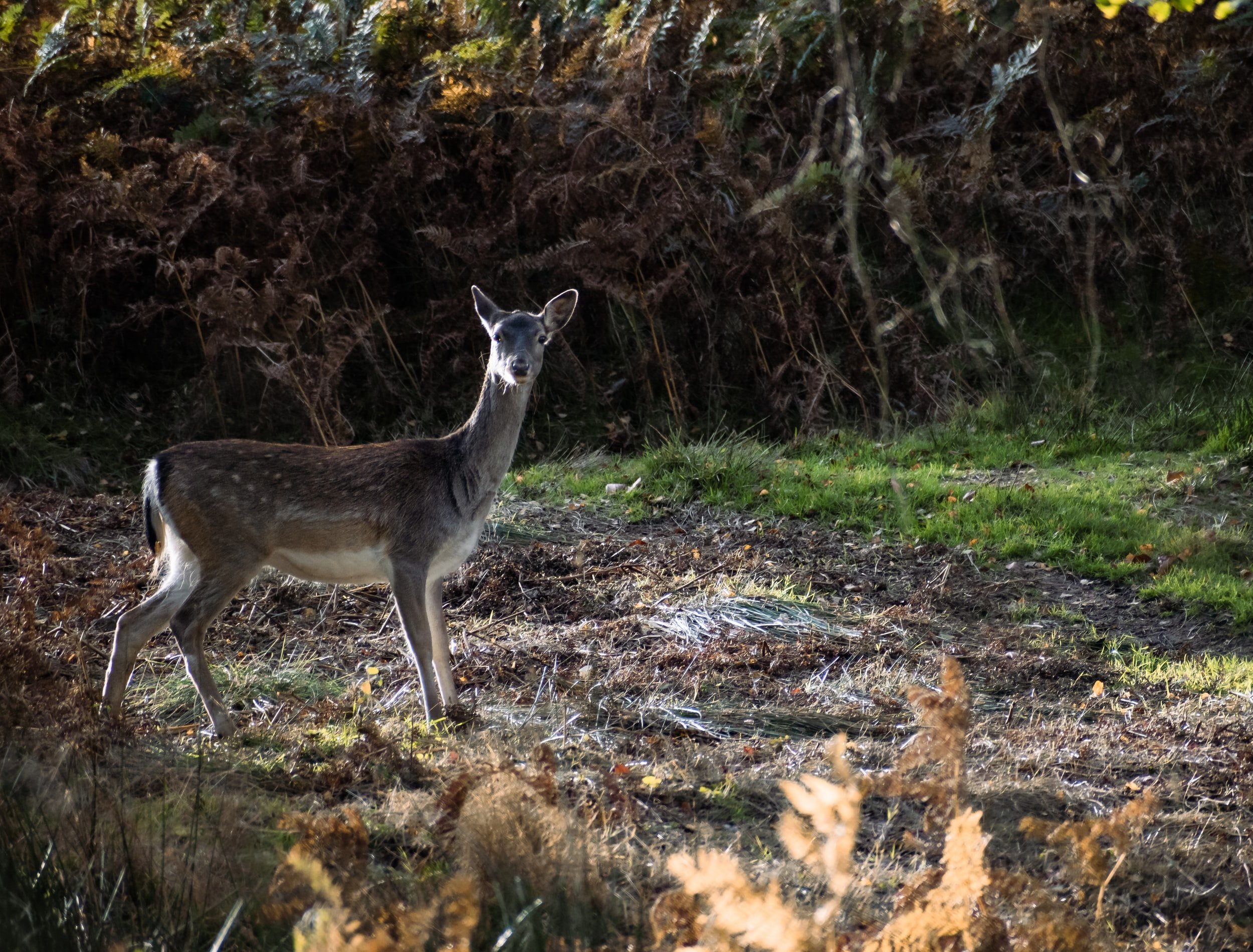
Fallow deer
Emblematic palmate antlers
Fallow deer are the only species living wild in the UK who grow palmate antlers. This makes them unique here when all their cousin species have conventional spikes and tines.
They exist in 4 color variations which several can all often be found on the same ground ; common, menil, black and white. The white fallow are very pleasing to the eye and can provide easy markers to their movement patterns but also allure the eye of poachers since they are far more visible than the rest of the herd.
needfull Fallow management
They have been referred to as “countryside vandals” because of the amount of browsing damage they can do to areas that should be shared with other species. Since they are much bigger than some of the other species in the UK, they need to eat considerably more and they aren’t known to refrain from eating arable crops, plantations or woodland ground cover. This can land themselves in some hot water with farmers and foresters, often leading to hard unstructured culling. Fallow deer are very quick to learn and they rapidly become nocturnal. This is why an ongoing methodical, slow and steady approach to fallow management often works well, so that they do not associate daylight hours with danger.
Reproduction
They rut in October and make a groaning almost benching like sound. Their physique changes quite a lot during this time due to the considerable spike in testosterone amongst the bucks. They tend to use the same rutting stands (territories) every year. Bucks will hold several does during the rut but live mainly separated for most of the year. Same do the does who, apart from late spring when they are giving birth, live separately as a general rule. They give birth to one fawn annually, typically in June and late births are not uncommon with fallow. This gives them an annual fecundity of 0.9. They are incapable of hybridization with other species like reds and sika for example.
Life cycle and venison
Bucks classed as they mature from yearling, pricket, sorel, sore, bare buck and master buck, all relate to the development of their antlers which don’t always accurately reflect age. Six to seven years may produce a master buck. Mature bucks can weigh as much as 80 to 100kg in habitats with good feeding, mature does slightly less at 35 to 50kg. Life expectancy can be a decade to 16 years in some cases. They have a high yield of venison per animal thanks to their size but can be difficult to maneuver to a suitable extraction point with a vehicle. and can flatten large areas of crops when couching (sleeping) in them.
Here's is a buck showing, what is often referred to as “fishtailed” antlers.
See also :





